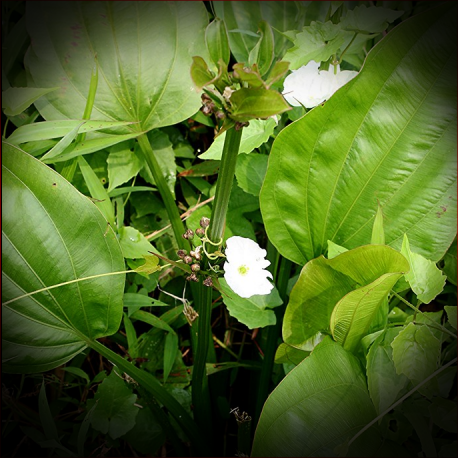More info
Datasheet
| Aquarium Compatible | yes |
| Plant Outdoor | yes |
| Plant Emersed Growth | yes |
| Plant Growth | fast |
| Temperature Tolerance | 15°C / 59.00°F - 30°C / 86.00°F |
| Temperature | 20°C / 68.00°F - 28°C / 82.40°F |
| Carbonate Hardness | 0-21 kh |
| pH Value | 5-8 ph |
| Light | medium-high |
| Carbon Dioxide (CO2) | 10-40mg/lmg/l |
| Nitrate (NO3-) | 10-50mg/lmg/l |
| Phosphate (PO43-) | 0.1-3mg/lmg/l |
| Potassium (K+) | 5-30mg/lmg/l |
| Iron (Fe) | 0.01-0.5mg/lmg/l |
General Description
Creeping burhead, scientifically known as Echinódorus cordifólius (L.) Griseb., is a versatile species found in the eastern and south-eastern regions of the USA and South America. This plant species exhibits significant variability, with some forms showcasing high growth and wide heart-shaped leaves, while others have narrow-oval-lanceolate leaf blades. The plant is recognized for its emersed growth in marshlands, ponds, and the shallow waters of lakeshores.
Aquarium Suitability
Echinódorus cordifólius is a longstanding aquarium plant with the vernacular names "radican sword" or Echinodorus radicans. Its suitability for aquarium cultivation varies among populations. Under conditions of intensive light, extended daylight exposure, and abundant nutrients, some populations tend to develop floating and aerial leaves while submersed leaves decay. Specific forms of E. cordifolius are better suited to open tanks, while others can thrive submersed with shorter daylight periods and the removal of long-stalked leaves.
Demands and Hardiness
The demands and hardiness of Echinodorus cordifolius in an aquarium setting vary depending on the specific population. The plant generally thrives under moderate to high lighting conditions and requires a nutrient-rich environment. It can withstand a range of temperatures between 20-28°C and demonstrates moderate tolerance to fluctuations within 15-30°C. Adequate carbon dioxide levels, a pH range of 5-8, and balanced levels of iron, nitrates, phosphates, and potassium are essential for its optimal growth.
Aquascaping & Usage
Echinodorus cordifolius, as a semi-emersed plant, can be utilized in aquariums for background or midground aquascaping, or as a striking specimen plant. Its rosette growth pattern, fast growth rate, and potential height of 30-50cm make it ideal for adding depth and texture to aquatic landscapes.
Propagation
Propagation of Echinodorus cordifolius can be achieved through proliferating inflorescences, rhizome division, seed germination, splitting, or cutting off daughter plants. When cultivated emersed, the plant forms inflorescences with adventitious plants, aiding in its propagation.
Habitat and Distribution
In its natural habitat, Echinodorus cordifolius is distributed across the southern and southeastern United States, Mexico, Cuba, and northern South America. Its presence in marshy areas, ponds, and lake shores highlights its adaptability to various aquatic environments in the mentioned regions.

